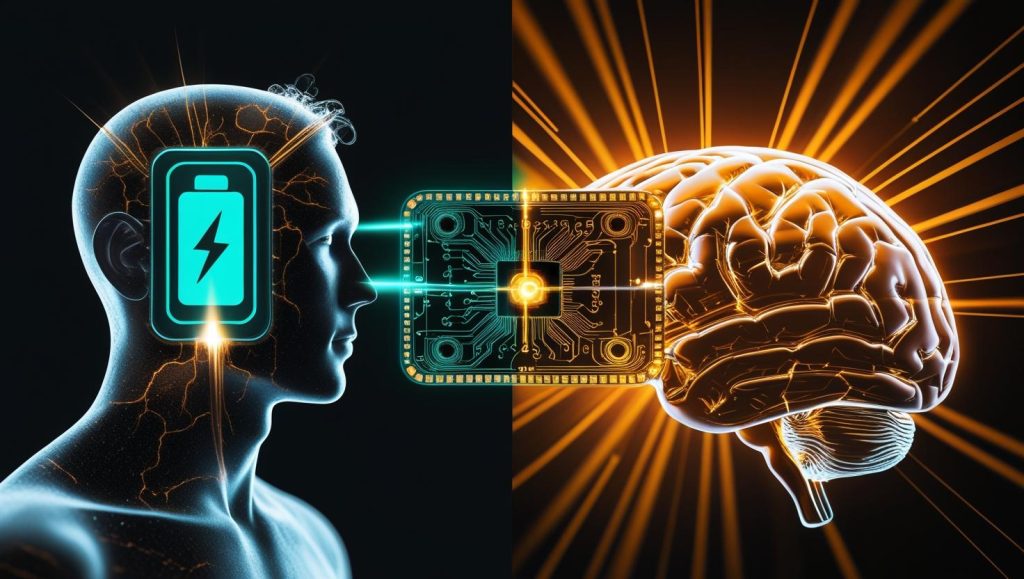It doesn’t buzz. It doesn’t have a screen. You can’t check email on it. And yet, WHOOP emerged as the most impactful tool in my personal productivity stack over the past year. For someone who tracks customer acquisition costs, churn rates, and MRR—I’d overlooked my most volatile asset: myself.
Startup culture glorifies hustle. But that hustle often runs on cortisol and caffeine. You wake foggy, chase clarity, then crash into lousy sleep. WHOOP breaks that cycle—not by pushing harder, but by helping you recover smarter.
Why entrepreneurs burn out—and often don’t see it coming
In high-growth environments, performance stress is seen as a badge of honor—until it becomes burnout. While many wearables track steps or heart rate, few offer actionable insight into your nervous system. WHOOP does.
This is especially relevant for leaders who juggle mental load, unpredictable sleep, and decision-making pressure. As we explored in the HTML-version of Biohacking Cognitive Health, data-driven recovery systems are now accessible—and essential—to sustainable high performance.
What WHOOP actually tracks
- Heart Rate Variability (HRV): Your autonomic nervous system’s stress-recovery balance.
- Resting Heart Rate (RHR): A baseline signal for strain and readiness.
- Sleep debt: Total deficit across days of low sleep.
- Strain Score: A calculated index of cardiovascular load from movement and mental effort.
- Recovery Score: A composite measure of your body’s preparedness for performance.
These metrics feed into an AI engine that turns raw data into daily recommendations—telling you whether to push forward or pull back.
How WHOOP’s feedback loop shaped my monthly rhythm
Every morning, my WHOOP feed provides:
- Sleep breakdown (deep, REM, disturbances, latency)
- Shifts in HRV and RHR compared to baseline
- A daily strain target—e.g., “aim for 8.3 today”
By evening, the app recaps:
- Whether you hit your strain goal
- Lifestyle decisions that affected recovery—late meals, blue light, alcohol
- Tactical recommendations for the next day
No more guessing. I plan based on whether my body is ready. As fintech founder Amar D. shares, “WHOOP taught me that my worst decisions came on red recovery days.”
Contextual coaching—not just data dumps
WHOOP doesn’t just report; it educates. My app fed insights like:
- “Your HRV dropped 12% after late-night whiskey.”
- “Recovery improved 18% after 10 minutes of breathing before bed.”
- “You slept 36 minutes longer when you skipped caffeine after 3 p.m.”
These aren’t stats—they’re behavioral coaching moments. Over time, you don’t just log data. You internalize patterns.
Thirty days later: what really shifted
- I delayed heavy workouts to green (high-recovery) days—and strength improved faster.
- Moved strategy sessions to HRV peaks—late morning—boosting creative clarity.
- Skipped coffee on low-recovery days—resulting in calmer afternoons.
- Replaced phone scrolling with short walks—because WHOOP signaled recovery spikes after movement.
The surprising outcome: I didn’t just optimize workouts—I optimized how I worked.
Quantifying stress as a strategic KPI
Stress is often unmeasured in startups. WHOOP makes it visible—and actionable. Through recovery trends, you see what behaviors cause loss:
- Travel: often red recovery days
- Excessive meetings: reduce cognitive reserves
- Consistent meditation: linked to sustained recovery gains
Soon patterns emerge: you’re more alert after 8+ hours of sleep; more reactive after low recovery weekends; get sick less when recovery stays above 70% over days. Self-care becomes strategic—not sentimental.
What WHOOP excels at
- Passive, frictionless intelligence—no manual logging
- Longitudinal learning—depth over time
- Athlete-grade physiological coaching for high-stakes professionals
This isn’t a step counter. It’s a leadership tool.
Limitations and what to consider
- Subscription model: $30/month required; hardware is free.
- Requires commitment: best when worn continuously.
- No display: data is accessed only via mobile app.
It demands consistency—but the returns multiply with use.
How WHOOP fits in your mental-performance ecosystem
WHOOP anchors the biofeedback branch of your cognitive performance stack. It pairs seamlessly with:
- Eight Sleep, to strengthen nightly recovery and sleep stage clarity
- BioLite, to minimize environmental cognitive friction
- Focus tools like Motion or Brain.fm, which use recovery signals to schedule deep work
- Habit systems such as Fabulous or Rize, which gain traction when cognitive energy is optimized
Viewed holistically, WHOOP is your daily pulse check—not just for health metrics, but for decision-making bandwidth.
Final verdict: hustle smarter, not harder
In 2025, performance isn’t just about pushing—it’s about pacing. WHOOP gave me the internal telemetry I didn’t know I needed. It taught me that effort without alignment drains focus. And that recovery isn’t a reactive luxury—it’s a proactive decision.
I don’t chase high performance anymore—I track it. Daily. Objectively. Strategically. For entrepreneurs, creators, and leaders working in high-stress environments, WHOOP is not optional—it’s foundational. Because your business can only move as fast as your recovery allows.



